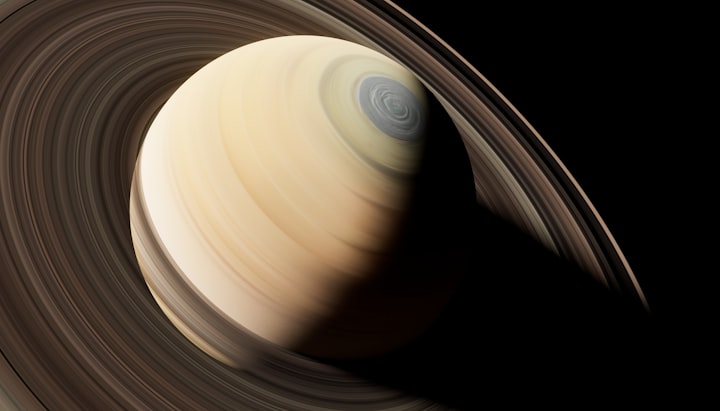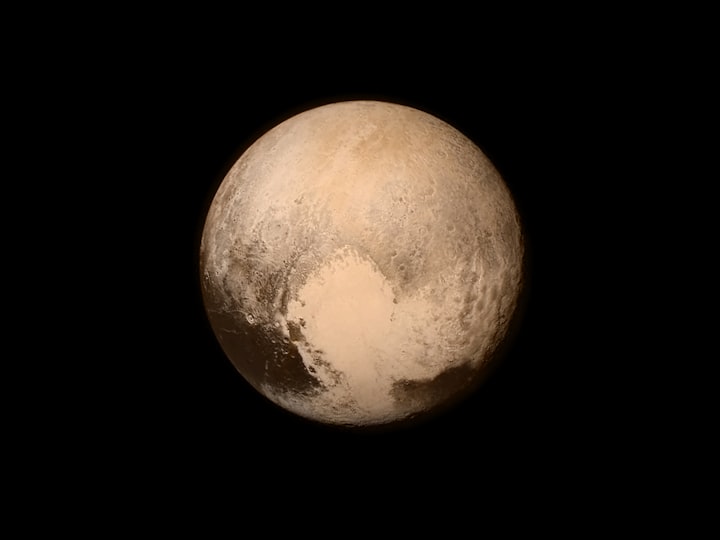
Millions of years in the past, Saturn possessed an additional moon, approximately 400 kilometers in diameter, composed primarily of ice. However, this moon's fate was sealed as it orbited too closely to withstand the immense gravitational forces exerted by Saturn. The formation of Saturn's rings is believed to have originated from an object that ventured too near to the planet. Encircling Saturn is an imperceptible boundary known as the Roche limit, which signifies the point at which Saturn's gravitational pull is potent enough to disintegrate an object, depending on its composition. The gravitational force on the side of the object closer to Saturn is significantly stronger than on the opposite side, resulting in its complete fragmentation. The object lacks sufficient gravitational force to remain intact. A prevailing hypothesis proposes that just beyond Saturn's atmosphere, an icy moon approaches or even breaches its Roche limit. As Saturn's colossal gravitational force tears it apart, the moon undergoes catastrophic rupture. A world torn asunder due to its proximity to a colossal entity, up to seventeen thousand trillion tons of ice disintegrates into orbit around Saturn. Due to the velocity at which this material travels, it is highly probable that within a few days, it disperses and encircles the magnificent giant. Saturn's famous ring is now in position, but when Cassini directs its instruments towards it, it observes a single ring that has been altered. The images we received were extraordinary, with a resolution that was perhaps 20 times better than anything we had seen before. Cassini uncovers how Saturn's massive rings have changed over time, with this debris now creating a disk wider than Jupiter but only about 10 meters thick on average. Moon-sized chunks of ice orbit the structure, creating large voids and turning one ring into multiple rings. However, it is when Cassini captures images with the sun directly above the equator that the most surprising aspect of the rings is revealed. We knew this would be an opportunity to explore the third dimension, something not visible in pictures of Saturn's rings. What we discovered was astonishing - vertical structures that took us by surprise. The sheer spectacle of it was completely unexpected. I can only imagine flying in a shuttle craft close to the rings, where it would appear as an endless sheet of shining debris. Suddenly encountering a two-mile-high wall of rubble would be an incredible sight. This transformation of a once small world of rock and ice into the solar system's greatest gem is truly remarkable. Even after more than a decade in orbit, Cassini has significantly enhanced our knowledge of Saturn, but its mission is far from complete. Saturn is not the only planet in our solar system that possesses rings; Jupiter, Uranus, and Neptune also have rings, albeit less prominent and dazzling compared to Saturn's. Saturn's rings consist of countless rock and ice fragments, varying in size from tiny grains of sand to massive pieces as large as a house. What would earth look like it it had a ring.. and how would it affect the climate, well although a ring could make our planet look beautiful but might be dangerous because some pieces of rocks from the ring could crash into the earth. The rings would also make it difficult for the international space station to navigate around the earth, and would also reduce photosynthesis.. which will eventually lead to the production of less oxygen, so yeah earth having a ring wouldn't be a great idea.
If you enjoyed reading this then please consider subscribing.. and liking this story if you enjoyed... Thanks for reading again!
About the Creator
Josh
exploring the universe and it's mysteries.. nature, planets, fictions and facts.





Comments (1)
valuable information.